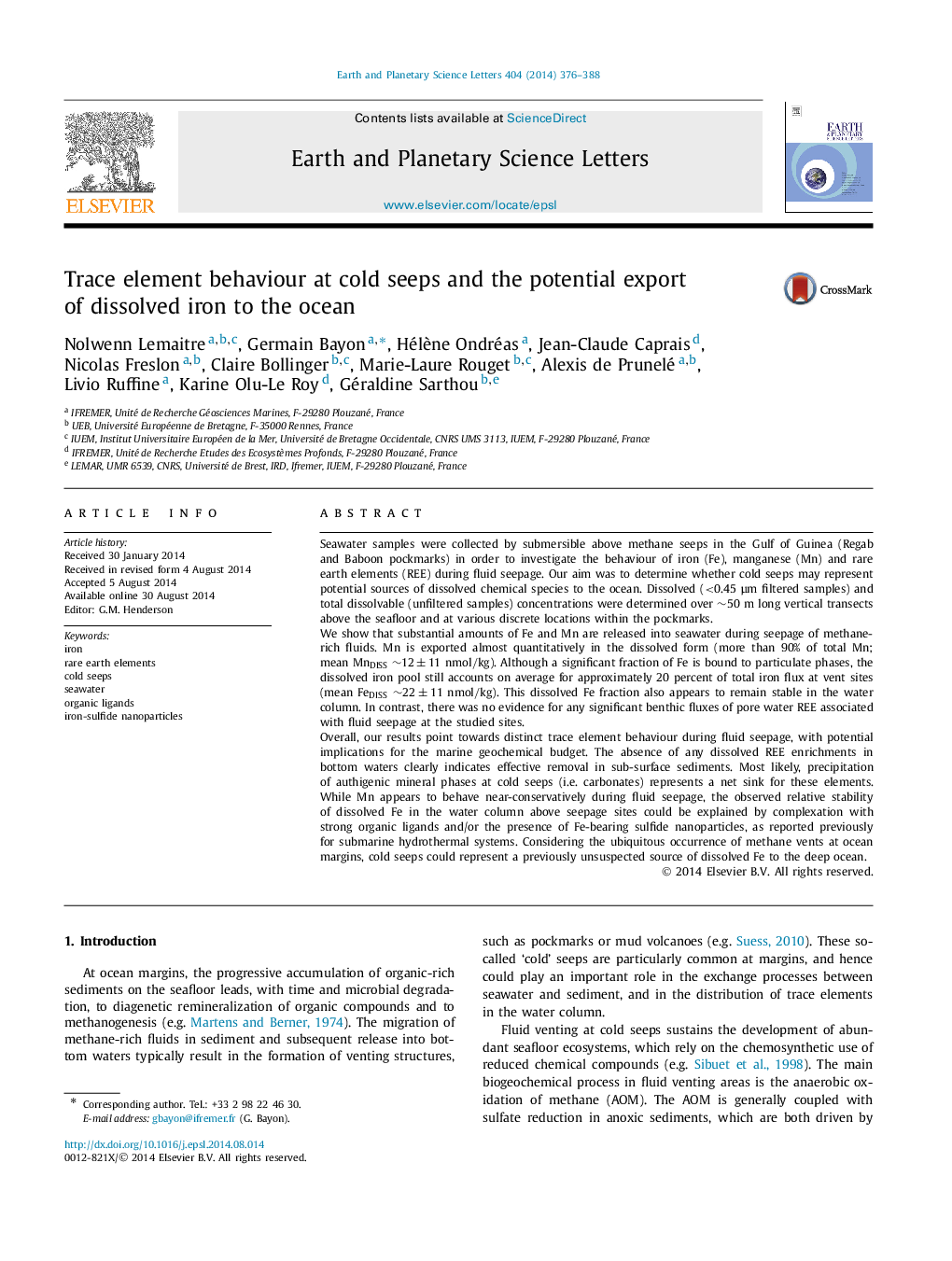| کد مقاله | کد نشریه | سال انتشار | مقاله انگلیسی | نسخه تمام متن |
|---|---|---|---|---|
| 6429064 | 1634752 | 2014 | 13 صفحه PDF | دانلود رایگان |
- Large amounts of dissolved Fe and Mn are released into seawater at methane seeps.
- Possible role of organic complexation or sulfide nanoparticles in stabilizing Fe.
- Cold seeps could represent an important source of dissolved Fe to the deep ocean.
- Precipitation of authigenic minerals leads to removal of REE in sediments.
Seawater samples were collected by submersible above methane seeps in the Gulf of Guinea (Regab and Baboon pockmarks) in order to investigate the behaviour of iron (Fe), manganese (Mn) and rare earth elements (REE) during fluid seepage. Our aim was to determine whether cold seeps may represent potential sources of dissolved chemical species to the ocean. Dissolved (<0.45 μm filtered samples) and total dissolvable (unfiltered samples) concentrations were determined over â¼50 m long vertical transects above the seafloor and at various discrete locations within the pockmarks.We show that substantial amounts of Fe and Mn are released into seawater during seepage of methane-rich fluids. Mn is exported almost quantitatively in the dissolved form (more than 90% of total Mn; mean MnDISSâ¼12±11 nmol/kg). Although a significant fraction of Fe is bound to particulate phases, the dissolved iron pool still accounts on average for approximately 20 percent of total iron flux at vent sites (mean FeDISSâ¼22±11 nmol/kg). This dissolved Fe fraction also appears to remain stable in the water column. In contrast, there was no evidence for any significant benthic fluxes of pore water REE associated with fluid seepage at the studied sites.Overall, our results point towards distinct trace element behaviour during fluid seepage, with potential implications for the marine geochemical budget. The absence of any dissolved REE enrichments in bottom waters clearly indicates effective removal in sub-surface sediments. Most likely, precipitation of authigenic mineral phases at cold seeps (i.e. carbonates) represents a net sink for these elements. While Mn appears to behave near-conservatively during fluid seepage, the observed relative stability of dissolved Fe in the water column above seepage sites could be explained by complexation with strong organic ligands and/or the presence of Fe-bearing sulfide nanoparticles, as reported previously for submarine hydrothermal systems. Considering the ubiquitous occurrence of methane vents at ocean margins, cold seeps could represent a previously unsuspected source of dissolved Fe to the deep ocean.
Journal: Earth and Planetary Science Letters - Volume 404, 15 October 2014, Pages 376-388
